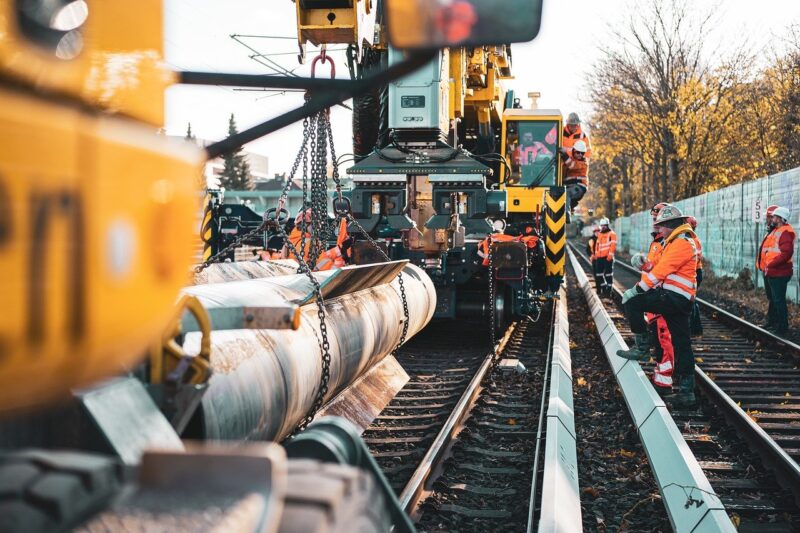The Mafia’s Stronghold on New York’s Construction Industry: A Dark Legacy
November 15, 2024

For decades, the Mafia’s grip on New York City’s construction industry has been nothing short of legendary. This powerful organization, with its infamous reputation, has left an indelible mark on the city’s skyline and the individuals who strive to build it. From shakedowns to labor unions, the Mafia’s influence has woven itself into the very fabric of construction in New York, creating a dark legacy that remains relevant today.
1. Historical Background: The Rise of the Mafia in New York
The origins of the Mafia’s involvement in New York’s construction scene can be traced back to the early 20th century. As Italian immigrants flooded the city, they faced discrimination and limited opportunities. In this environment, organized crime syndicates began to provide support, offering protection and financial assistance in exchange for loyalty and obedience.
#### Key Milestones in Mafia History:
– 1900s – 1930s: Early Mafia families established power bases in Little Italy, influencing various sectors, including construction.
– 1930s – 1960s: The rise of iconic figures like Lucky Luciano and Frank Costello transformed the Mafia into a dominant force in American organized crime.
– 1960s – 1980s: Construction unions became a significant playing field for the Mafia, as they sought to control labor and profits from public contracts.
The historical backdrop is essential to understand how the Mafia’s presence grew and adapted alongside the burgeoning construction industry in New York City.
2. The Mafia’s Influence on Labor Unions
Labor unions play a critical role in the construction industry, advocating for workers’ rights and securing better wages and conditions. However, this power also made them vulnerable to corruption and manipulation by organized crime. The Mafia strategically infiltrated unions, ensuring their dominance over labor forces in New York.
#### Tactics Employed by the Mafia:
– Intimidation and Violence: Mobsters used threats and violence to silence dissent and maintain control over union leadership.
– Extortion and Shakedowns: Contractors were often forced to pay a percentage of their profits to Mafia-controlled unions as protection money.
– Bribery: Undermining the democratic processes within unions through bribery of union officials, ensuring compliance with organized crime interests.
Through these methods, the Mafia solidified a harsh reality for many workers and contractors, creating walls of fear and complicity that made it challenging to escape their influence.
3. Major Scandals and Investigations
The dark interplay between the Mafia and New York’s construction industry has led to numerous scandals and high-profile investigations. These events reveal both the extent of Mafia influence and the efforts by authorities to curtail it.
#### Significant Cases:
– The 1970s Knapp Commission: This investigation exposed rampant corruption among city officials and law enforcement, with significant ties to organized crime, particularly in the construction industry.
– The Dapper Don and the Gambino Family: John Gotti’s notorious reign in the 1980s revealed the Gambino family’s extensive control over construction unions and projects in New York City.
– Recent Investigations: The Second Avenue Subway Project: Investigations in more recent years have uncovered ongoing Mafia influence in major public works projects, showcasing the enduring legacy of their control.
Despite efforts to bring down organized crime, many believe that the roots of the Mafia still run deep within New York’s construction landscape.
4. The Impact on Modern Construction Projects
Today, New York City remains one of the most vital construction hubs in the world. Despite a decline in overt Mafia activities due to increased policing and regulation, the legacy of mob influence lingers in subtle yet significant ways.
#### Current Concerns:
– Bid Rigging: Even with efforts to ensure transparency, bid rigging remains a concern as factions may still attempt to manipulate contracts to favor certain entities.
– Access to Contracts: Questions about who gains access to lucrative city contracts are still prevalent, with some alleging that historically prominent families retain unfair advantages.
– Worker Exploitation: Some reports indicate that labor exploitation continues, particularly in less regulated sectors of the construction market.
The construction industry’s landscape has changed, but the echoes of a dark legacy still shape business practices and labor dynamics today.
5. Moving Forward: The Fight Against Corruption
Addressing the long-standing problems related to Mafia influence requires a multi-faceted approach. Authorities, workers, and advocacy groups are increasingly aware of the need to combat systemic issues to ensure a fair construction environment.
#### Strategies for Reform:
– Increased Transparency: Encouraging transparency in bidding processes is crucial to eliminating opportunities for corruption.
– Enhanced Whistleblower Protections: Protecting those who expose corrupt practices can encourage more individuals to come forward with information.
– Collaboration Between Agencies: Local, state, and federal agencies must work together to address corruption more effectively and dismantle long-standing networks.
The fight against corruption remains an uphill battle, as trust needs to be rebuilt between workers, contractors, and officials. However, with vigilant efforts and a commitment to change, there is hope for a more transparent and equitable construction industry in New York.
Conclusion
The Mafia’s stronghold on New York City’s construction industry has left a profound legacy that resonates in various ways. From initial control over labor unions to modern allegations of bid manipulation, organized crime has had a dramatic impact on how buildings are erected and who profits from them. As the city continues to evolve, addressing these challenges head-on is essential to foster fair practices and prevent the ominous reach of organized crime from extending further into the future.






